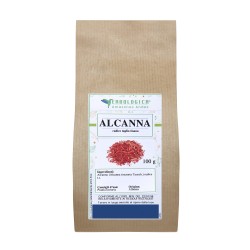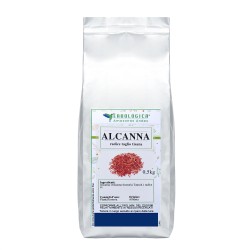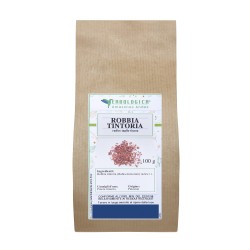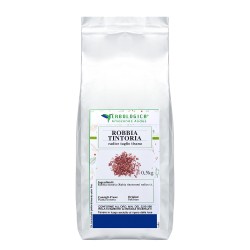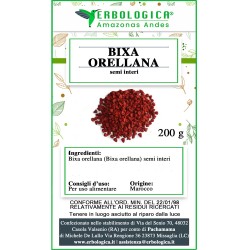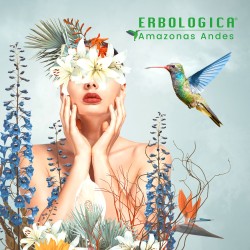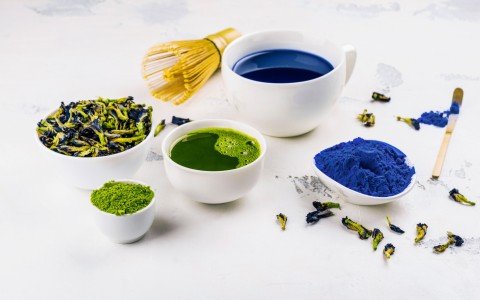
Erbe Tintorie
In questa esplorazione ci addentriamo nell'antica arte della tintura naturale, in cui le meraviglie botaniche vengono trasformate in pigmenti che adornano tessuti, fibre e persino carta.
Entra in un regno in cui antiche tradizioni si incontrano con la moderna creatività e in cui il potere delle piante libera uno spettro di colori oltre l'immaginazione.
Dal maestoso indaco ai delicati petali di camomilla, ogni erba custodisce un segreto unico per sbloccare un mondo di colori naturali.
Unisciti a noi mentre sveliamo i misteri di questa antica arte, scoprendo le tecniche, le ricette e le storie tramandate per generazioni.
Preparati ad essere ispirato mentre intraprendiamo un viaggio colorato attraverso l'arte della tintura naturale, dove creatività e sostenibilità si intrecciano per creare una bellezza senza tempo e eco-friendly.
Introduzione alla tintura naturale
La tintura naturale ha una lunga storia che risale a migliaia di anni fa.
Prima dell'avvento dei coloranti sintetici, le persone si affidavano alle risorse naturali per tingere tessuti e materiali.
Le erbe, le radici, i frutti e persino gli insetti venivano utilizzati per ottenere una vasta gamma di colori.
Questa antica pratica ha radici profonde in molte culture di tutto il mondo, come l'antica arte della tintura indiana con l'indaco, o la tradizione giapponese del tintura con il sakura.
Storia della tintura naturale
La storia della tintura naturale è affascinante e ricca di tradizioni e scoperte. In molte culture antiche, come quella degli antichi egizi e dei romani, la tintura era un'arte preziosa e riservata a pochi privilegiati.
Tuttavia, sono state le civiltà dell'Asia e delle Americhe a fare progressi significativi nella tintura naturale.
Ad esempio, gli antichi maya hanno sviluppato una tecnica di tintura altamente sofisticata utilizzando l'indaco, che ha prodotto un blu intenso duraturo nel tempo.
Anche l'India ha una lunga tradizione di tintura naturale, con l'indaco e la curcuma che sono ancora ampiamente utilizzati oggi.
Vantaggi della tintura naturale
La tintura naturale offre numerosi vantaggi rispetto ai coloranti sintetici.
In primo luogo, è una scelta sostenibile e ecologica, poiché utilizza ingredienti naturali e biodegradabili.
I coloranti sintetici, al contrario, spesso contengono sostanze chimiche nocive e possono inquinare l'ambiente. Inoltre, la tintura naturale offre una vasta gamma di colori unici e sfumature che sono difficili da replicare con coloranti sintetici.
Ogni erba e ogni pianta ha una composizione chimica unica che contribuisce a creare colori unici e sorprendenti. Infine, la tintura naturale può avere un impatto positivo sulla salute delle persone.
Molti coloranti sintetici possono causare allergie e irritazioni della pelle, mentre i coloranti naturali sono generalmente più sicuri e meno aggressivi.
Erbe comuni per la tintura e le loro proprietà
Esistono molte erbe comuni che possono essere utilizzate per la tintura naturale.
Ogni erba ha proprietà specifiche che influenzano il colore che può produrre.
Ad esempio, l'indaco è noto per produrre un blu intenso, mentre la curcuma può creare un giallo brillante.
Altre erbe comuni per la tintura includono la camomilla, che può produrre tonalità di giallo e marrone, e l'aloe vera, che può creare sfumature di verde.
È importante sperimentare con diverse erbe e combinazioni per ottenere i colori desiderati.
Preparazione del tessuto per la tintura
Prima di iniziare il processo di tintura, è importante preparare il tessuto in modo che assorba il colore in modo uniforme.
Una delle prime cose da fare è lavare il tessuto per rimuovere eventuali sostanze chimiche residue o impurità.
Successivamente, è possibile trattare il tessuto con una soluzione di mordente per favorire l'adesione del colore. Il mordente è una sostanza che si lega sia al tessuto che al colore, aumentando la sua durata.
Esistono diversi tipi di mordenti, come l'allume di potassio e il solfato di ferro, che possono essere utilizzati a seconda del tipo di tessuto e del colore desiderato.
Tecniche di tintura naturale
Ci sono diverse tecniche di tintura naturale che è possibile utilizzare per ottenere diversi effetti e design.
Una delle tecniche più comuni è l'immersione, in cui il tessuto viene immerso nella soluzione di tintura per un determinato periodo di tempo.
Questa tecnica produce un colore uniforme su tutto il tessuto.
Un'altra tecnica è la tintura a macchie, in cui il tessuto viene piegato o legato in modo da creare motivi o disegni.
La soluzione di tintura viene quindi applicata solo su alcune parti del tessuto, creando un effetto macchiato o sfumato.
Creazione di diversi colori con le erbe per la tintura
Le erbe per la tintura possono essere combinate in varie proporzioni per creare una vasta gamma di colori.
Ad esempio, l'indaco può essere miscelato con altre erbe per creare sfumature di blu intenso o viola.
Allo stesso modo, la curcuma può essere combinata con l'aloe vera per creare sfumature di verde.
La sperimentazione è fondamentale per scoprire le combinazioni che producono i colori desiderati.
Consigli per ottenere colori vibranti e duraturi
Per ottenere colori vibranti e duraturi con la tintura naturale, ci sono alcuni consigli da seguire. In primo luogo, è importante utilizzare erbe fresche e di alta qualità.
Le erbe essiccate possono perdere alcune delle loro proprietà di tintura, quindi è meglio utilizzare erbe fresche quando possibile.
Inoltre, è necessario assicurarsi di seguire correttamente le istruzioni per la preparazione del tessuto e l'applicazione della tintura.
Un'altra considerazione importante è l'esposizione al sole.
Alcuni colori possono sbiadire se esposti alla luce solare diretta per lunghi periodi, quindi è consigliabile proteggere i tessuti tinti dalla luce solare intensa.
Pratiche ecologiche nella tintura naturale
La tintura naturale è una pratica intrinsecamente ecologica, ma ci sono ulteriori misure che possono essere adottate per renderla ancora più sostenibile.
Ad esempio, è possibile utilizzare acqua piovana invece di acqua potabile per preparare la soluzione di tintura.
Inoltre, è possibile riciclare e riutilizzare gli ingredienti utilizzati per la tintura, come le erbe e i mordenti.
Ridurre gli sprechi e l'inquinamento dell'acqua durante il processo di tintura è un altro aspetto importante dell'approccio ecologico alla tintura naturale.
Esplorare l'arte della tintura naturale nella moda e nei tessuti
L'arte della tintura naturale ha guadagnato popolarità negli ultimi anni nel settore della moda e dei tessuti.
Sempre più designer e marchi stanno abbracciando la tintura naturale come alternativa sostenibile ai coloranti sintetici.
I tessuti tinti naturalmente possono creare design unici e sfumature che non possono essere replicate con coloranti sintetici. I
noltre, la tintura naturale offre ai consumatori la possibilità di indossare capi realizzati con materiali eco-friendly e privi di sostanze chimiche nocive.
Risorse per approfondire la tintura naturale
Se sei interessato a saperne di più sulla tintura naturale, ci sono molte risorse disponibili per approfondire l'argomento.
Ci sono libri, tutorial online e workshop che possono fornire ulteriori informazioni sulle tecniche, i colori e le ricette per la tintura naturale.
Inoltre, ci sono comunità online e gruppi di appassionati che condividono le loro esperienze e consigli sulla tintura naturale.


